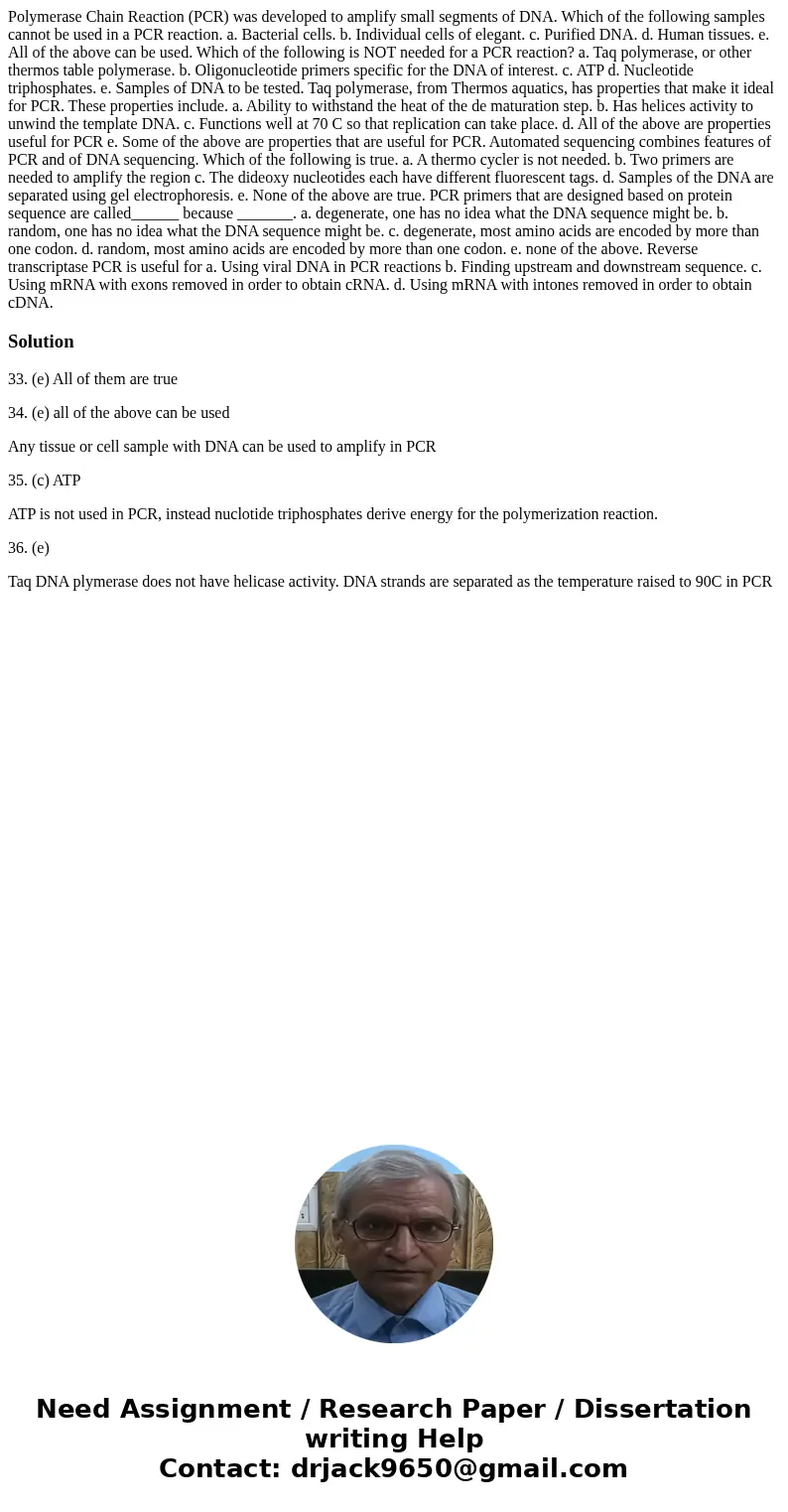Polymerase Chain Reaction PCR was developed to amplify small
Polymerase Chain Reaction (PCR) was developed to amplify small segments of DNA. Which of the following samples cannot be used in a PCR reaction. a. Bacterial cells. b. Individual cells of elegant. c. Purified DNA. d. Human tissues. e. All of the above can be used. Which of the following is NOT needed for a PCR reaction? a. Taq polymerase, or other thermos table polymerase. b. Oligonucleotide primers specific for the DNA of interest. c. ATP d. Nucleotide triphosphates. e. Samples of DNA to be tested. Taq polymerase, from Thermos aquatics, has properties that make it ideal for PCR. These properties include. a. Ability to withstand the heat of the de maturation step. b. Has helices activity to unwind the template DNA. c. Functions well at 70 C so that replication can take place. d. All of the above are properties useful for PCR e. Some of the above are properties that are useful for PCR. Automated sequencing combines features of PCR and of DNA sequencing. Which of the following is true. a. A thermo cycler is not needed. b. Two primers are needed to amplify the region c. The dideoxy nucleotides each have different fluorescent tags. d. Samples of the DNA are separated using gel electrophoresis. e. None of the above are true. PCR primers that are designed based on protein sequence are called______ because _______. a. degenerate, one has no idea what the DNA sequence might be. b. random, one has no idea what the DNA sequence might be. c. degenerate, most amino acids are encoded by more than one codon. d. random, most amino acids are encoded by more than one codon. e. none of the above. Reverse transcriptase PCR is useful for a. Using viral DNA in PCR reactions b. Finding upstream and downstream sequence. c. Using mRNA with exons removed in order to obtain cRNA. d. Using mRNA with intones removed in order to obtain cDNA.
Solution
33. (e) All of them are true
34. (e) all of the above can be used
Any tissue or cell sample with DNA can be used to amplify in PCR
35. (c) ATP
ATP is not used in PCR, instead nuclotide triphosphates derive energy for the polymerization reaction.
36. (e)
Taq DNA plymerase does not have helicase activity. DNA strands are separated as the temperature raised to 90C in PCR

 Homework Sourse
Homework Sourse